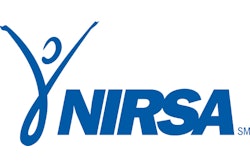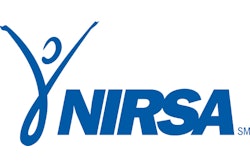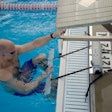
Although campus recreation centers have always been showcased prominently on tours for incoming students, colleges and universities are relying on physical fitness and health and wellness opportunities to attract and engage students like never before.
Just ask Brooke Turner, director of recreation programs at the University of Alabama.
“It’s a changing landscape regarding enrollment and how students are making their decisions. They’re savvier consumers than they’ve ever been,” says Turner, who also is chair of NIRSA’s Member Network, which serves as a vehicle for communication between the association’s many leadership groups and NIRSA members. “That changes how we operate our campuses.”
To that end, NIRSA is making changes, too. The association recently bolstered its institutional membership program by providing greater access to programs, resources and data in the face of mounting challenges for campus recreation departments of all sizes.
“By investing in a NIRSA institutional membership, schools are making an investment to develop a strong, informed and connected team,” says Lashica Thomas, director of campus recreation at Columbus State University in Georgia and, as of May 1, NIRSA’s new president. “Campus rec programs look to NIRSA to deliver resources to aid their department in professional development.”
“Schools that are committed to investing in competency-based professional growth of their staff, that are looking to recruit and retain top talent in the field of collegiate recreation and wellbeing, and that need to be tapped into the field’s body of knowledge are part of NIRSA at the institutional member level,” adds Sarah Leskovec, senior director of member engagement for NIRSA.
Individual membership remains a terrific option for professionals and students looking to keep their finger on the pulse of the profession through perks such as access to the NIRSA Connect online community and the association’s learning tools, Leskovec says, but many campus rec departments don’t cover NIRSA individual membership fees. As a result, institutional membership might be a more feasible option to bring professional staff into the NIRSA network.
“Even if they don’t have an individual membership in NIRSA, their affiliation with a NIRSA member school alone unlocks access to more than 40 on-demand learning products — and those are available to every member of the school’s campus rec team at no additional cost to them,” Leskovec says. “Institutional membership provides benefits that support not just individuals, but entire departments.”
Removing barriers to resources
NIRSA’s institutional membership is available to any institution, not just colleges and universities, that administers or is considering offering a recreation, intramural or wellness program. Military installations, correctional institutions, and municipal parks and recreation departments can all be NIRSA institutional members, too.
One of the biggest benefits of institutional membership status is a complimentary NIRSA individual membership and reduced rates for additional memberships, which in turn can help bolster recruitment and retention of professional staff.
“It’s a way of showing that we promote and support professional development and growth,” says Turner, noting that the University of Alabama has been a NIRSA institutional member for decades. “When we go to recruit for new positions or open positions, that membership status is a value-add for us — and it was especially helpful back when our salaries were less competitive than they are now.”
Institutional members also receive full access to the association’s benchmarking resources, salary survey results and data sets, as well as several other existing and new benefits.
“All members will probably notice the increased frequency in ‘Ideas in Motion’ virtual discussions,” Leskovec says. “Twice a month, members get together to discuss timely topics in the profession and exchange ideas. These discussions are open to anyone in the field and are free to all members, while nonmembers pay a nominal registration fee to access each conversation.”
Live and recorded webinars will be available to institutional members for free, as well. Current topics include “Exploring Inclusion of College Students with Intellectual and/or Developmental Disabilities within Campus Recreation at the Organizational Level” (June 12), “Wellbeing and Lifestyle of Collegiate Esports Participants” (June 26), “Disability 101: Language and Best Practices for Collegiate Recreation” (July 17) and “Easy Ways and Wins to Embed Health Throughout Our Work” (TBA).
“There are some webinars that previously would have cost the institution or the individual to participate in,” Turner says. “Now, through that institutional membership, they are included — whether you have an individual membership or not. So, it’s opening up new opportunities and allowing people who don’t have individual memberships access to more resources. It also allows units or departments to work through courses together and discuss learnings on campus, continuing their professional development without travel.”
That’s not all, though, as Brittany Rejda, NIRSA’s director of learning, explains.
“We’ve been hearing for a few years that while members value the relationships that are formed during intensive in-person learning experiences such as the NIRSA School or our focused institutes, some aren’t able to commit to a multiday learning event that involves significant travel,” she says. “So, we’ll be piloting a cohort collective this fall to foster connection, community and collective growth for a handful of key areas in campus recreation.”
Turner adds that the increased value these expanded benefits bring to institutional membership also could help recreation leaders “justify” such an expense to administration leaders amid budget constraints. “I think that this is a huge win,” she says.
‘Lift each other up’
The recent enhancements for institutional members are in line with the direction in which Thomas sees NIRSA heading.
“We’ve been talking about what’s next for the association and its capacity to be a catalyst for advancing recreation and wellbeing in higher education,” she says. “Some of that includes the speed at which we respond to our members’ needs and requests. We made changes based on member feedback by removing perceived barriers for things they want access to.”
Membership in an organization like NIRSA, whether at the individual or institutional level, is vital for today’s college recreation professional, Turner adds.
“The value of membership in NIRSA is the community of professionals that lift each other up,” she says. “Burnout in campus recreation, burnout in student affairs, burnout in higher ed — these are real things. And if we’re not caring for ourselves, we can’t care as well for our students. For me, being an individual member and having my institution support my membership with its own membership breathes life back into me. It allows me to talk to other people who are in my situation, bring back best practices and help me help others.”
Thomas is committed to maintaining NIRSA’s fluidity in responding to a changing higher education landscape.
“Every institution, and every member, has different needs,” she says. “We have to continue evaluating, listening, learning and making sure that we are producing and putting out there what members truly need.”





































